24+ Sample Stock Lists
-

Sample Stock List Template
download now -

Equity Stock Pledge List
download now -
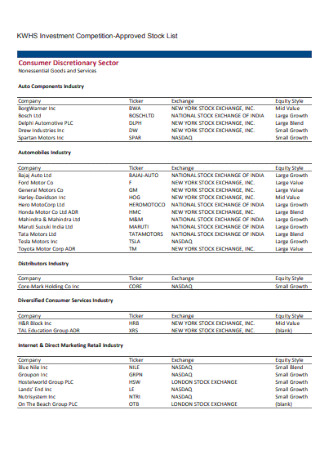
Approved Stock List
download now -

Steel Stock List Template
download now -
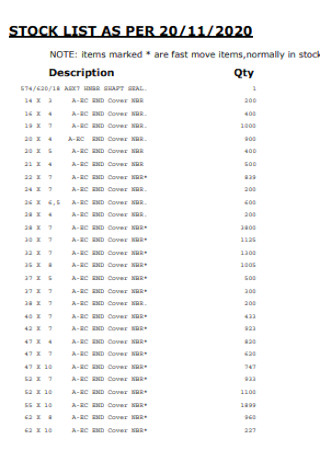
Basic Stock List Template
download now -

Stock Item List Template
download now -

Burwash Larder Stock List
download now -

Contact Lens Stock List
download now -

Stock list of Medicines
download now -
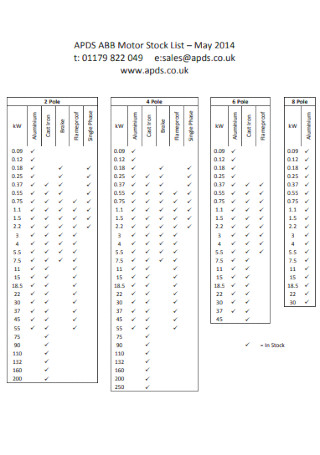
Motor Stock List Template
download now -

Stock Check List Template
download now -

Simple Stock List Template
download now -
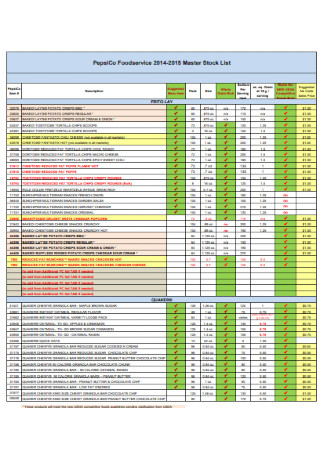
Food Service Stock List
download now -
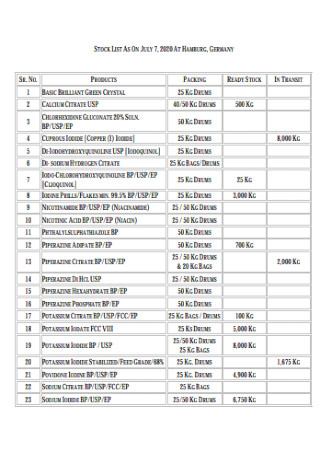
Standard Stock List Template
download now -

Product Stock List Template
download now -

Stock Requirements List
download now -

Standard Stock List Example
download now -

Instrument Stock List Template
download now -

Forest Product Stock List
download now -
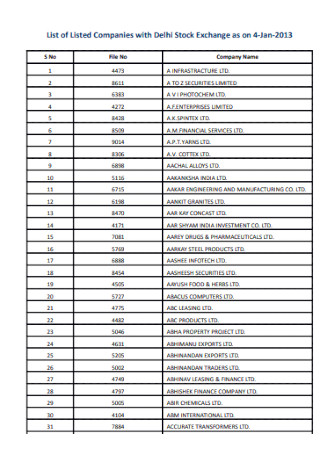
Company Stock List Template
download now -
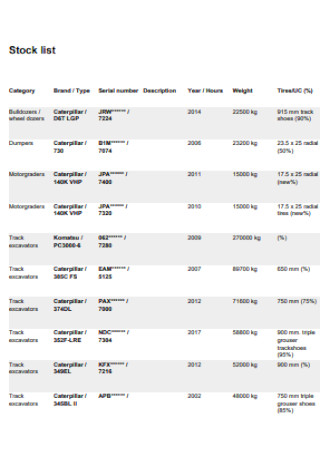
Printable Stock List Template
download now -

Stock List of Electrical items
download now -

Standard Stock Price List
download now -
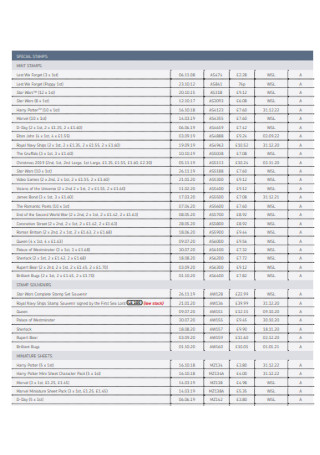
Stock List Format
download now -

Floor Stock List Template
download now
FREE Stock List s to Download
24+ Sample Stock Lists
What is a Stock List?
Types of Stocks for Investment
Benefits of Inventory Management
How to Create a Simple Stock List
FAQs
What are the different sectors of the stock market?
What are the categories of stocks?
What are some examples of stock lists?
How do stocks work?
What is a Stock List?
A stock list is a clear and detailed product list of things such as foods, goods, raw materials, instruments, and other tools kept and used in business firms, corporations, institutions, private agencies, and others. It is also used as an all-inclusive list of the stocks available on a specific stock exchange and their issuers. There are various types of stocks in commercial businesses such as common stocks, dividend stocks, non-dividend stocks, growth stocks, IPO stocks, large-cap stocks, mid-cap stocks, small-cap stocks, value stocks, and many others.
Preparing a comprehensive and well-coordinated stock list and an inventory checklist is beneficial for business managers, business owners, financial analysts, stock investment analysts, and other professionals to closely monitor the availability and latest condition of their stocks on their items, goods, and other things related to their businesses and determine to replenish their inventory for their customers. This stock list can be used by investors and financial analysts when they are planning to have stock market investments to fuel growth and generate a return on their investments.
Types of Stocks for Investment
Owning stocks in various companies across many different parts of the economy is a great way for stock market investors to broadly diversify their portfolios. Based on the Global Industry Classification Standard (GICS), the stock market is divided into 11 sectors, composed of 25 industry groups and 74 industries this 2023: the energy sector, the materials sector, the industrials sector, the consumer discretionary sector, the consumer staples sector, the health care sector, the financials sector, the information technology sector, the communication services sector, the utility sector, and the real estate sector.
Benefits of Inventory Management
The American Production and Inventory Society (APICS) states that inventory management is a fundamental aspect of business management that focuses on the planning and controlling of inventories and stocks, especially in maintaining a desired stock level of specific products or items. Here are some of the benefits of having effective and systematic inventory management and using an inventory list and an inventory form.
How to Create a Simple Stock List
Are you having a difficult time controlling, managing, and organizing the products, items, and stocks in your business? Follow the simple steps for creating a simple stock list.
Step 1: Use a Stock List Template
Look for some sample editable and printable stock list templates online. Sample.net offers a wide-ranging collection of document and list templates including stock list templates that you can easily and quickly customize for your inventory management or stock market investment. Choose from our list template samples and download your preferred stock list template.
Step 2: Create Columns for Inventory Items and Descriptions
Construct a list of inventory items using a vertical column based on the SKU level. Draw another column for the description of the items. Give more context or detail in this section to help you identify the product easily, report your inventory and stock, and track the products quickly.
Step 3: Assign Prices
List down the price of each item so that you can easily get the total value of your inventory and stock, as well as the value of each product based on the price and quantity. Monitor the purchase or manufacturing cost from the selling price separately.
Step 4: Edit and Finalize the Stock List
When you are finished adding all the basic components to your stock list, review your stock list and revise it if necessary. Share the stock list with your inventory management team. Ask for their feedback. Lastly, finalize your stock list.
FAQs
The different sectors of the stock market are the energy sector, the materials sector, the industrials sector, the consumer discretionary sector, the consumer staples sector, the health care sector, the financials sector, the information technology sector, the communication services sector, the utility sector, and the real estate sector.
According to Peter Lynch, there are six categories of stocks: slow growers, stalwarts, fast growers, cyclical, asset plays, and turnarounds.
Some examples of stock lists are equity stock pledge lists, steel stock lists, basic stock lists, stock item lists, contact lens stock lists, medicine stock lists, motor stock lists, food service stock lists, product stock lists, instrument stock lists, forest product stock lists, company stock lists, and floor stock lists.
Business firms and companies issue stocks to raise money for the financing of their business operational needs and accelerate their corporate growth. Also, investors buy stocks to have the opportunity to bring out returns on their investments.
What are the different sectors of the stock market?
What are the categories of stocks?
What are some examples of stock lists?
How do stocks work?
Preparing a clear and well-coordinated stock list is beneficial to help business owners, project managers, business analysts, investors, shareholders, customers, and other individuals to be informed and updated on the current status of their inventories and stocks. In this way, you can keep an accurate inventory and stay alert concerning the updates in your stock so that you can easily reorder the things you need right away. If you need to create a stock list today, we have included sample stock lists and other documents for your inventory management and stock market investment such as a stock research report, a sale of shares agreement, and business lists.
